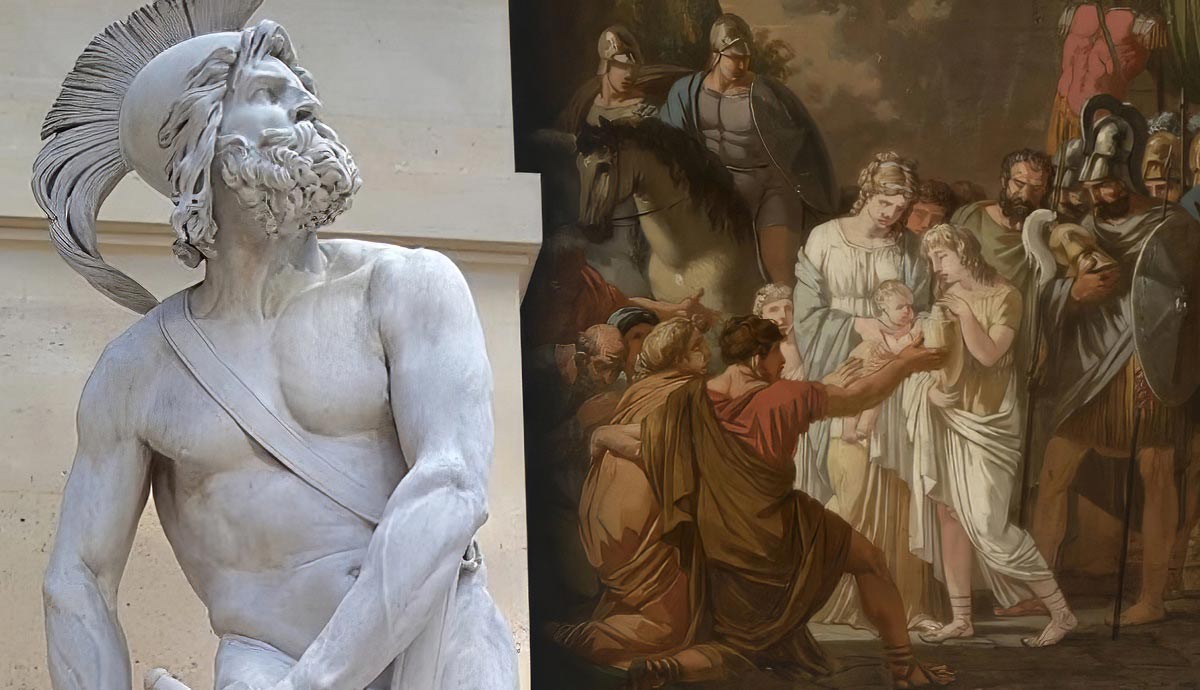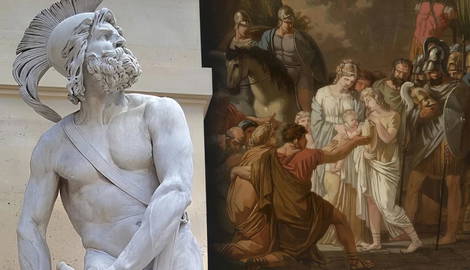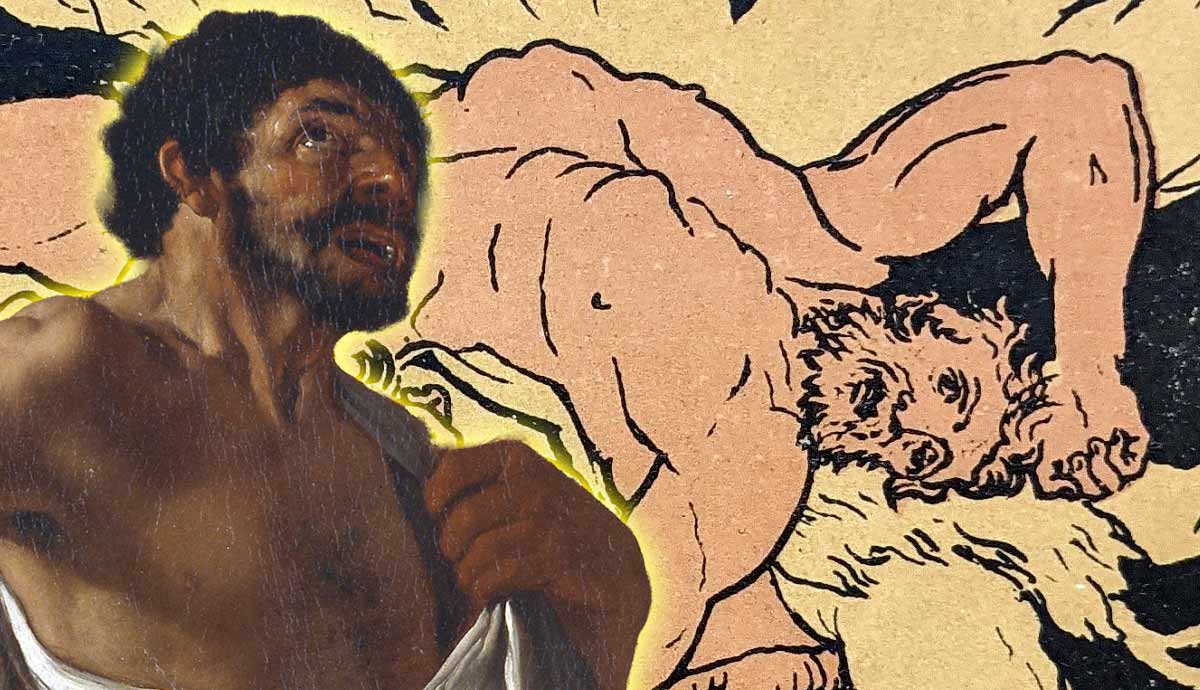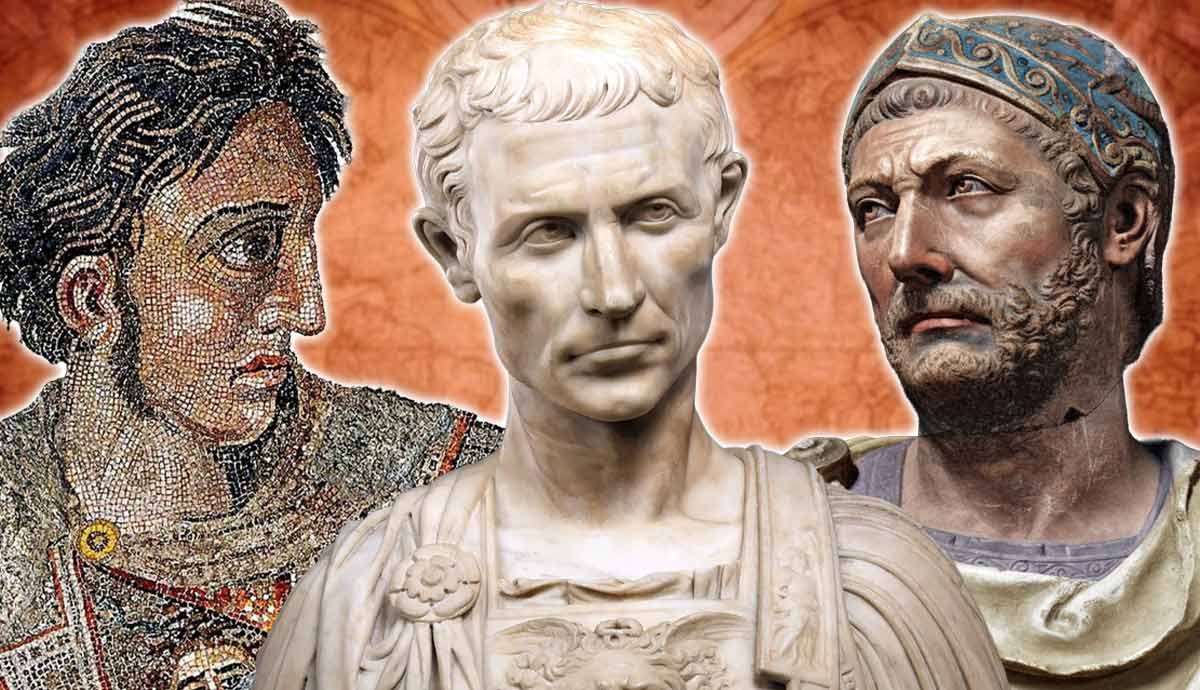
summary
- Philopoemen (253-183 BCE) served as strategos of the Achaean League in several conflicts with Sparta and was considered Greece’s last great general.
- He fought alongside the Macedonians and as a mercenary in Crete before taking command of the Achaean cavalry, and then the League’s army.
- Reforming the military, Philopoemen distinguished himself at the Battle of Sellasia, the Battle of Mantinea, and against Nabis of Sparta.
- At the age of 70, he commanded an army against the city of Colonis during which he was captured and forced to drink poison.
Philopoemen (253-183 BCE) was a strategos (general) of the Achaean League during a turbulent period of conflict with Sparta. While he has been overshadowed by great generals such as Hannibal, Alexander the Great, and Julius Caesar, Philopoemen was regarded as one of the most astute military minds of his generation. This is the story of his life from a valiant foot soldier to mercenary on Crete to leader of the Achaean forces.
Early Life

Philopoemen was born in 253 BCE in Megalopolis, one of the largest cities in Arcadia and a member state of the Achaean League, a confederation of Greek city-states in the north and central Peloponnese. His father, Craugis, died when Philopoemen was a child. His care was entrusted to Cleander, a friend of his father and an exile from Mantineia.
The boy was educated by the Megalopolitan philosophers Ecdemus and Megalophanes. Both men were ardent democrats, having arranged for the assassination of Aristodemus, tyrant of Megalopolis, and the ousting of the tyrant Nicoles from the city of Sicyon. Thus, Philopoemen was tutored with a certain reverence for democratic values.
According to his biographer Plutarch, centuries later, Philopoemen displayed the virtues of a commander from a young age. He wrote that “the boy’s character took on from the very outset a noble and kingly mold.” Moreover, “from his very boyhood he was fond of a soldier’s life,” readily learning skills such as heavy-armed fighting and horsemanship.
Defense of Megalopolis

Philopoemen first came to prominence at the age of 30 when Megalopolis was assaulted by King Cleomenes III of Sparta in 223 BCE. The inhabitants of Megalopolis were caught off guard by the Spartans, who came at night, and the enemy breached the city and occupied the agora.
According to Plutarch, Philopoemen “fought with vigor and daring,” but the defenders were too few. When it was evident that the city would be lost, Philopoemen drew the enemy’s attention with an audacious attack, allowing many Megalopolitans to escape. Philopoemen later escaped, despite being wounded and losing his horse.
The Balance of Power in Greece

The balance of power on the Greek peninsula remained fluid during Philopoemen’s lifetime. Sparta had never regained the dominance it enjoyed before its defeat by Thebes at the Battle of Leuctra in 371 BCE, but, as the capture of Megalopolis demonstrated, the Spartans were still a force to be reckoned with. This was especially true under the capable commander and reformer Cleomenes III, who, according to the historian William Smith, was “the last truly great man of Sparta, and, excepting perhaps Philopoemen, of all Greece.”
To the north, the Kingdom of Macedon, ruled by Antigonus III Doson, remained the dominant power in Greece, despite the breakup of Alexander the Great’s empire into the various successor states after his death. The Achaeans distrusted the Macedonians and had previously secured financial backing from the Ptolemaic Kingdom (another successor state) to boot out tyrants installed in their cities by the Macedonian Antigonid dynasty. However, the Achaeans were too weak to face the Spartans alone and looked to Macedon for support.
The Battle of Sellasia, 222 BCE

An allied force of Macedonians, Achaeans, and other Greeks marched against Sparta at Sellasia in 222 BCE. According to Polybius, the allied force led by Antigonus numbered 28,000 infantry and 12,000 cavalry. The Megalopolitan contingent, led by Cercidas of Megalopolis, was 1,000 strong and armed in the “Macedonian fashion.” Philopoemen was positioned with the Macedonian and Achaean cavalry on one of the army’s flanks. Next to him were Illyrian mercenaries who protected the vulnerable gap between the infantry and cavalry.
The Spartan force consisted of about 20,000 infantry and 650 cavalry. Cleomenes correctly anticipated that Antigonus would march towards Sparta via the road through Sellasia. He ordered his troops to take up positions in the pass that lay between the two hills of Evas and Olympus. Cleomenes fortified his hill positions and stationed cavalry and mercenaries on the level ground where the road traced the path of the river Oenus.
Philopoemen Distinguishes Himself at Sellasia

Philopoemen was assigned to the contingent responsible for assaulting Evas. The Illyrians advanced first, but this created a gap between the light-armed mercenaries and the Achaean infantry that the Spartans were able to exploit. Seeing this danger, Philopoemen urged his superiors to react, but they dismissed him due to his lack of experience. According to Polybius, Philopoemen was not discouraged and “acted for himself, and cheering on the men of his own city, made a vigorous charge on the enemy.” This was sufficient to prevent the encirclement of the Achaean, Illyrian, and Macedonian troops.

The accounts of Plutarch and Polybius differ on what happened next. Philopoemen fought in the subsequent cavalry engagement, but it is unclear whether he was forced to dismount due to rough terrain or if his horse was “killed under him”. However, the two ancient historians agree that he fought on with “conspicuous gallantry” despite receiving severe wounds to both thighs, possibly caused by a javelin. Plutarch further recounts how “he drew his sword and made his way through the front ranks against the enemy, thereby greatly animating the combatants and inspiring them with a desire to emulate his valor.”
The battle was decided by the clash of the Macedonian and Spartan phalanxes. Owing to Cleomenes’ reforms, both forces were equipped with the long Macedonian-style sarissa pikes. However, Antigonus had arranged his men in a double phalanx. The added weight and depth of their formation were enough to break the Spartan line and win the day.
Mercenary in Crete

After the Battle of Sellasia, Philopoemen spent the next decade soldiering in Crete. Impressed with his performance in battle, Antigonus had offered him a position as an officer in the Macedonian army, but Philopoemen refused, preferring the work of a mercenary.
Little is known about Philopoemen’s time in Crete. However, warfare on the mountainous Greek island differed significantly from that on the mainland. Whereas there was ample level ground for conventional set-piece battles in mainland Greece, guerrilla warfare was the mainstay in rocky Crete. The Cretans themselves were famed as talented archers and offered their services extensively as mercenaries across the ancient Mediterranean. Although Philopoemen’s activities on the island remain largely unknown, the Cretan way of war evidently influenced his continued evolution as a commander because he implemented new tactics upon his return to the mainland ten years later.
Cavalry Commander of the Achaean League

Philopoemen returned to mainland Greece in 210 BCE and was given overall command of the Achaean cavalry. Philopoemen’s excellence as not just a commander but a reformer shone. According to Plutarch, he found the Achaean cavalry in a pitiful state, lacking both experience and courage. The cavalry was also thoroughly corrupt, and some of the men paid others to take their place. Philopoemen introduced several rewards and punishments to incentivize his men to strive for martial prowess. He had them perform drills and contests, often in front of spectators, to improve their skills but also their esprit de corps.
Philopoemen was soon presented with an opportunity to test the resolve of his men. Within the broader context of the First Macedonian War between the Roman Republic and Macedon, the Achaean League found itself in a conflict with the Aetolian League and the city-state of Elis. The Achaeans faced an army of Aetolians and Eleans near the Larissa River on the border with Elis, led by Damophantus. During the battle, the reformed Achaean cavalry fought well and Philopoemen marked himself out yet again with his bravery.
According to Plutarch, during the battle, “Damophantus, general of the Elean horse, singled out Philopoemen, and rode with full speed at him. Philopoemen awaited his charge, and, before receiving the stroke, with a violent blow of his spear, threw him dead to the ground: upon whose fall the enemy fled immediately.”
Philopoemen Is Appointed Strategos

In 209 BCE, Philopoemen was appointed to the position of strategos (general). He used his newfound position to introduce sweeping reforms to the Achaean army. He either reformed the Achaean infantry in the manner of the classical Greek hoplite phalanx or in the manner of the Macedonian-style phalanx, which was primarily differentiated by the use of the longer sarissa pikes.
Plutarch wrote that the Achaeans adopted the “aspis and sarissa,” in other words, the equipment of the Macedonians, whereas before they were equipped with shorter spears and lighter Celtic-style thyreos shields, which had become popular after the Celtic invasion of Greece in the 3rd century BCE. According to Pausanias, Philopoemen “persuaded them to put on breastplates and greaves, and in addition to use Argive shields (aspides) and long spears.”
Battle of Mantinea

In 207 BCE, Philopoemen led the Achaean army against the Tyrant Machanidas of Sparta at the Battle of Mantinea. The opening moves of the battle were not in Philopoemen’s favor. Machanidas led his cavalry against the skirmishers and mercenaries deployed ahead of the main Achaean line. The Achaeans were far too lightly armed to repel mounted opponents and were quickly routed.
Fortunately for the Achaeans, Machanidas was far too impetuous in his attack and pursued the fleeing skirmishers beyond the main battle line of the Achaeans. This allowed Philopoemen to advance against the Spartan infantry, who were idling on a hill. The main Spartan force, which had witnessed their leader chase down the fleeing Achaeans, was not expecting an attack. They were outflanked by the Achaeans, who, according to Plutarch, killed about 4,000 of them.
Machanidas, seeing that the day was lost, attempted to flee, but was personally pursued by Philopoemen, who struck him with his spear after the Spartan tyrant attempted to cross a waterlogged ditch on his horse. The Achaeans marked their triumph with a statue of Philopoemen at Delphi. Later, when the general attended the Nemean Games, the audience greeted him with applause.
First Confrontation with Nabis of Sparta & Return to Crete

By 201 BCE, the Achaean League and Sparta were again at war. Nabis, the last independent king of Sparta, was able to capture the Achaean city of Messene. The current Achaean strategos, Lysippus, was a cautious general and deemed any venture to save Messene too risky. In response to his inaction, Philopoemen was made strategos again. That same year, he was able to repel Nabis from Messene and defeat Nabis at Tegea.
After driving out Nabis, Philopoemen returned to Crete in 199 BCE. He spent six years leading the armies of Gortyna as a mercenary general. During his absence, Nabis renewed his military campaign against the Achaeans. Megalopolis itself came under siege, and the city’s starving inhabitants were forced to grow crops in any open spaces within the confines of the city walls to survive.
Philopoemen remained in Crete and did not initially return to defend his homeland. Luckily for the Achaeans, a Roman force under Titus Quinctius Flaminius campaigned against the Spartans between 196 and 194 BCE, and Nabis was forced to abandon many of his military gains.
Second Confrontation with Nabis

Philopoemen returned to mainland Greece in time for the next round of fighting between the Achaean League and Sparta. However, the Megalopolitans were so incensed by his absence during their time of need that they almost stripped him of his citizenship. But considering their current need, they made him strategos in 192 BCE.
Operations against the Spartans were initially disastrous. The Achaeans lost a battle at sea, frustrating Philopoemen’s efforts to relieve the Laconian town of Gytheum from Spartan besiegers. Nabis, now confident that he would not be attacked from the sea, retired one-third of his soldiers from Gytheum to make camp near Pleiae.
Seeing an opportunity, Philopoemen sent a group of light-armed skirmishers — slingers, archers, and peltasts — in small boats to make an amphibious landing near the Spartan camp under the cover of darkness. From their landing point, they caught the Spartans completely unaware and set the camp alight by hurling firebrands at it. According to Livy, “Many were consumed by the flames before they knew of the enemy’s approach… With sword and fire, everything was destroyed.” The attack was thoroughly unconventional but effective.
Final Battles and Death

The war with Sparta ended with an Achaean victory. Nabis was murdered by a force of Aetolians meant to relieve him. Philopoemen promptly marched on Sparta and forced it to join the Achaean League. He marched on the city a second time in 188 BCE and ended the agoge, Sparta’s famous military education system.
At the age of 70, Philopoemen was made general once again. Exhausted after years of campaigning, a rebellion against the Achaean League prompted him to lead an army against the rebels at the village of Colonis, despite being ill with fever. During the battle, Philopoemen and his cavalry were caught off guard. He charged at the enemy several times to save his men, but he was unhorsed and captured. The veteran general was forced to drink poison and died in captivity.
The Achaeans were greatly distressed by Philopoemen’s death and erected statues across the cities of Achaea in his honor. Pausanias, the ancient Greek geographer, would later comment that after his demise, “Greece ceased to bear good men.”
Greece officially became part of the Roman Empire in 146 BCE after the Achaean War, when the Achaean League took a final stand against the growing power and influence of Rome.










